Even though it’s a very common vegetable in our country and we have a lot of it, one question/irritant remains: the famous corn silk! Originally, I just wanted to talk to you about the silk, but then a childhood memory came back to me…
When I was little and we would go for walks in Quebec’s Eastern Townships, I remember my mother saying, “There are so many fields of corn! No wonder we eat so much of it in Canada!”
It was impossible to miss them, those vast expanses of green stalks swaying in the wind. No surprise she wondered—Canada produces around 15 million tons of corn every year, and each of us eats, what… a dozen, at most?
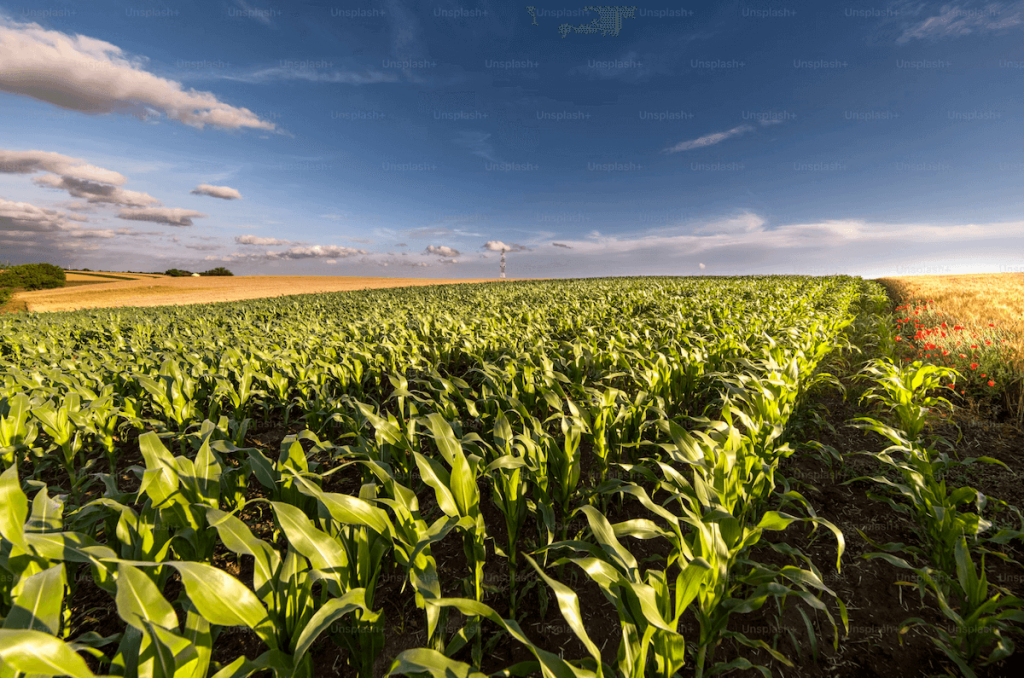
So in this comprehensive article, we’re going to demystify not one, not two, but three aspects of this much-loved vegetable! Three? Yes, we’ll look at why there are so many hairs on corn, just to be thorough, we’ll also talk about the different types of corn that grow here, and finally, what we do with ALL that corn in Canada. Of course, I’ll give you some gardening tips too!
To Each Grain Its Own Hair
Vous êtes-vous déjà demandé pourquoi certains épis de maïs ont des grains missing, creating incomplete rows? The answer lies in the silky threads emerging from the spike—known as “silks.” Here is nature’s closely guarded secret: each hair corresponds exactly to a female flower, and therefore to a potential grain.
A single male “panicle” at the top of the plant produces millions of pollen grains, enough to pollinate several ears. These microscopic grains, light as feathers, travel on air currents, without the need for pollinating insects.
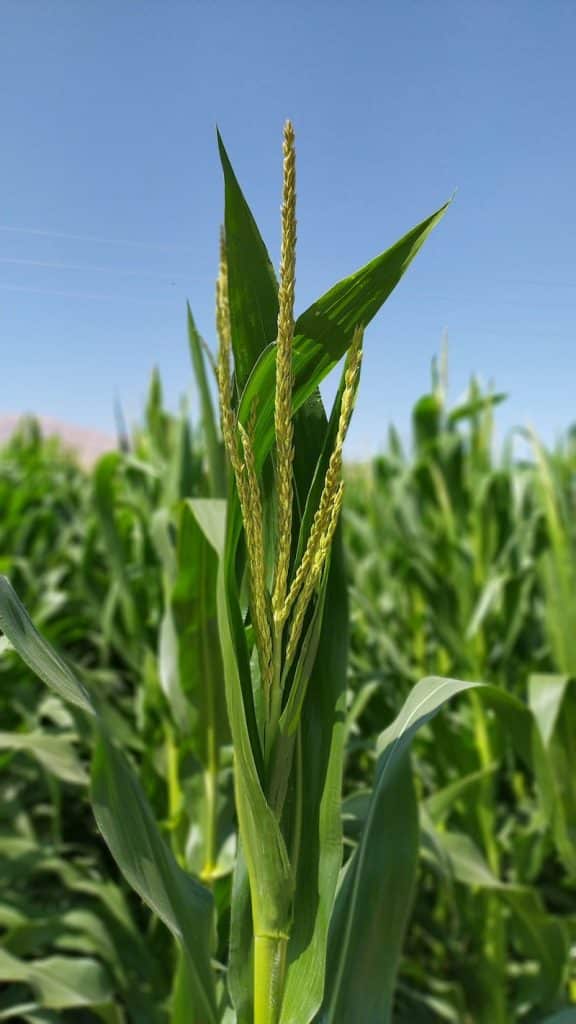
When one of them lands on a receptive silk, this female flower develops a small tube that descends to the ovule, which is nothing more than a single corn kernel, still tiny, in a miniature ear. This fertilization will allow this single kernel to develop.
Each ear therefore reproduces about as much as an entire apple tree! It’s a good thing the wind takes care of everything, otherwise it would be a lot of work for insects.
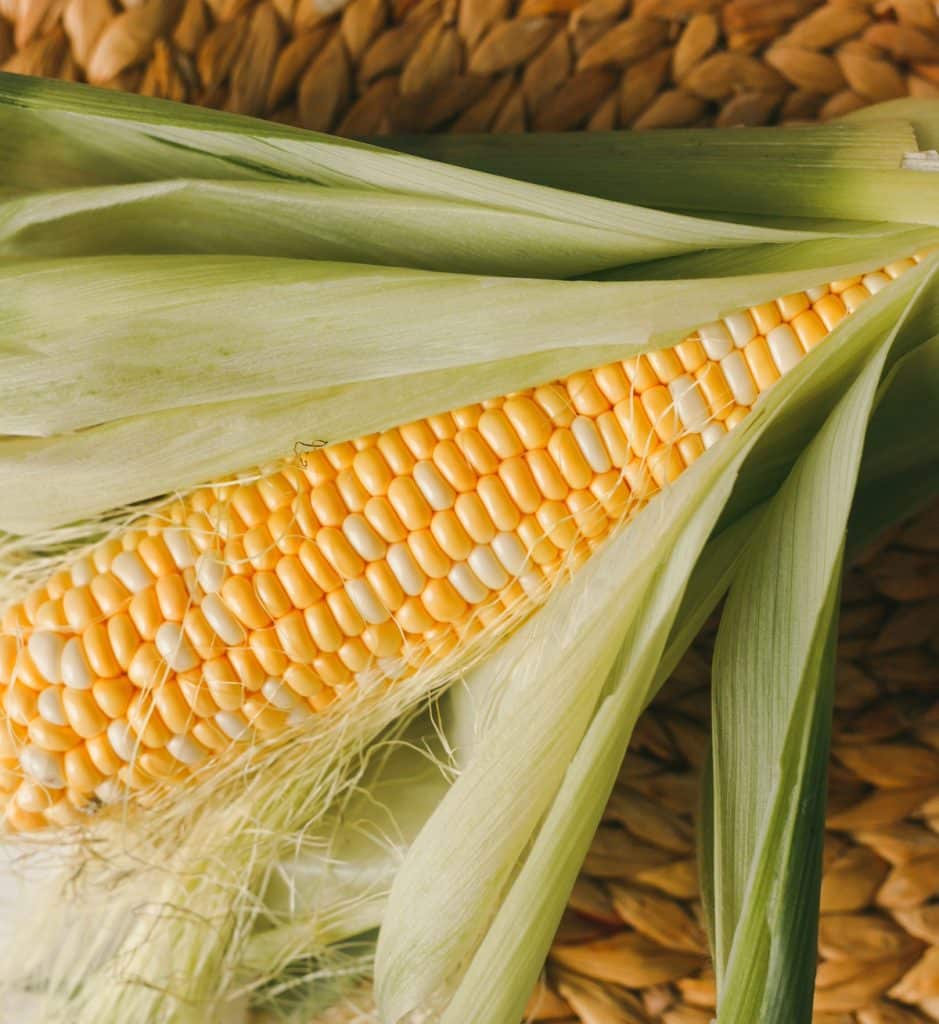
The bristles grow at a phenomenal rate: up to 4 centimeters (1.5 inches) per day. The first to appear are those at the base of the cob (the broad tip). The bristles at the tip are the last to grow, which explains why the grains at the tip are often missing—they are the last guests at the pollination party, and sometimes all the male pollen has already been dispersed by the time they arrive. If the winds are not favorable, some bristles remain pollenless, creating empty spaces in the ear.
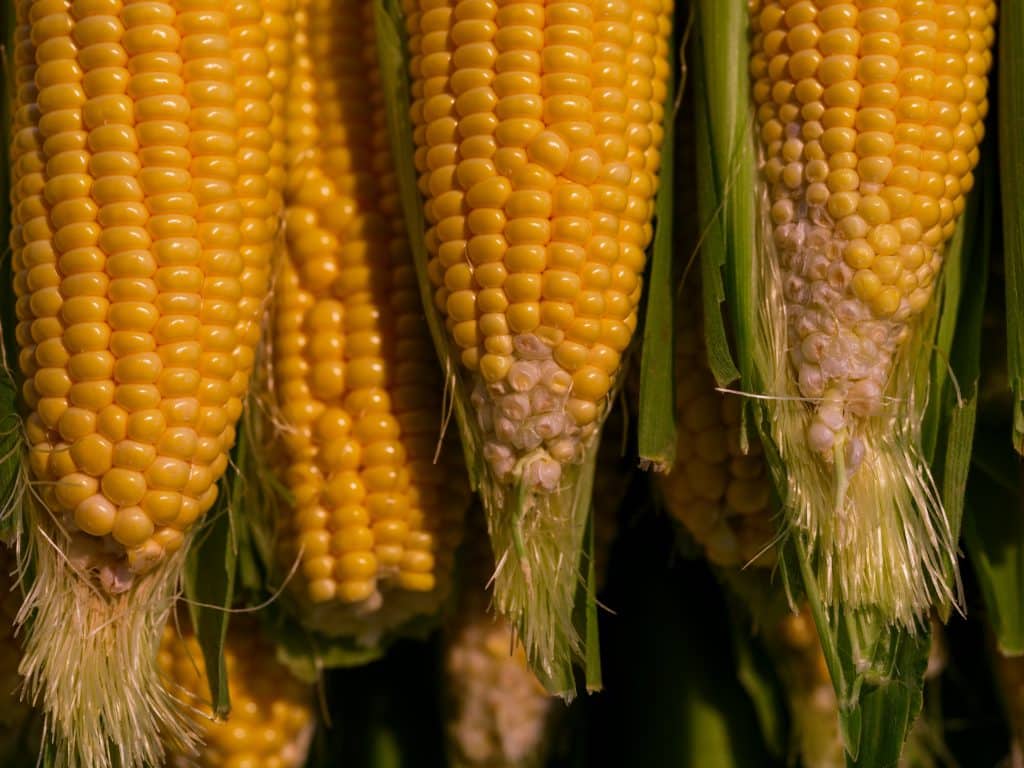
Endless Variety!
Contrary to popular belief, corn is not limited to the classic yellow and white ears. The varieties grown here rival each other in genetic ingenuity, each adapted to a specific use and our northern climate.
Sweet corn dominates our home gardens with its three main families, known in the jargon as SU, SE, and SH2. Traditional SU (Standard Sweet) varieties, such as the famous Golden Bantam, grown since 1902, contain a mixture of starch and sugar that gives them the creamy texture so appreciated at corn roasts. SE (‘Sugar Enhanced’) varieties contain almost twice as much sugar but remain delicately tender. SH2 (‘Shrunken-2’ or ‘Supersweet’) varieties are nature’s candy, with 35% sugar content. They are crunchy and can be stored in the refrigerator for up to a week.
Of All Colors
Have you ever heard that white corn is less nutritious? Actually, that’s not true! The color is simply the result of mutations that remove colored pigments, sometimes concentrating other beneficial compounds. But color genetics don’t stop at yellow and white! Anthocyanins create those beautiful purple ears that contain more antioxidants than blueberries, and carotenoids give rise to orange corn, rich in vitamin A precursors. Some varieties are grown solely for decorative purposes, much like pumpkins carved for Halloween!
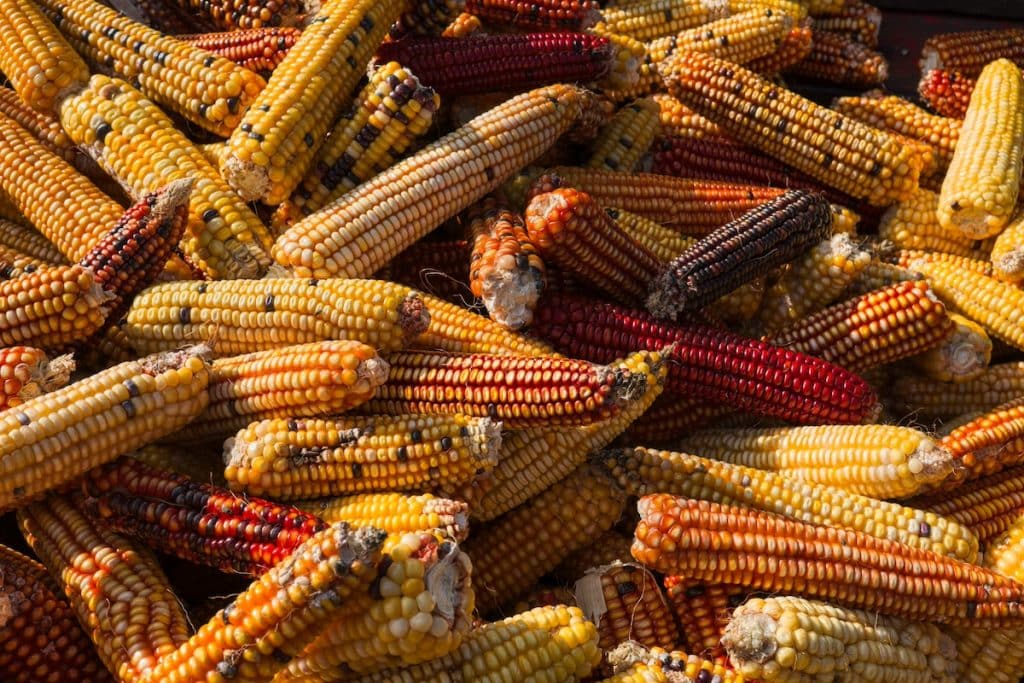
But be careful: planting different varieties together will turn your garden into a genetic laboratory! Unlike most vegetables, corn undergoes “double fertilization”: the pollen fertilizes both the future seed AND the endosperm (the part we eat). What this means: if pollen from a corn variety used for animal feed fertilizes your sweet corn, your kernels will become more floury and less sweet that year. And if you replant those seeds the following year, you’re in for a surprise: unexpected colors, strange textures, and unpredictable flavors.
The Answer to My Mom’s Question
If we see so many cornfields but don’t eat corn at every meal, it’s because most of our production—about 80%—is used to feed livestock. Corn accounts for three-quarters of the grain demand for animal feed in Canada. We each indirectly consume much more corn through animal products—milk, meat, eggs—than directly from the cob!
The rest is used in a thousand and one ways: the food industry processes some of it into semolina, flour, and corn syrup; starch mills make industrial products; distilleries use it for whiskeys; and oil is even extracted from it! Ethanol fuel projects could eventually absorb a growing portion. This diversified industry generates thousands of jobs. The corn that ends up directly on our plates represents only a small fraction of these vast fields.
The Secrets to Successful Home Gardening
Growing corn in your garden is as much an art as it is a science. The golden rule can be summed up in one word: block. Forget about neat rows—corn needs to be planted in compact squares or rectangles to ensure pollination by the wind… and protection from that same wind!
Last year, I tried planting corn in my very windy garden. Bad idea! The few stalks in my garden didn’t grow taller than three feet, and I didn’t harvest a single ear of corn that was 100% mature.
In large agricultural fields, the first two or three rows at the edge often produce disappointing yields compared to the well-protected plants in the center. They serve as protection for the others, as excessive wind can interfere with pollination, growth, and even rooting. Look at fields along roadsides; the first rows are usually shorter and less productive.
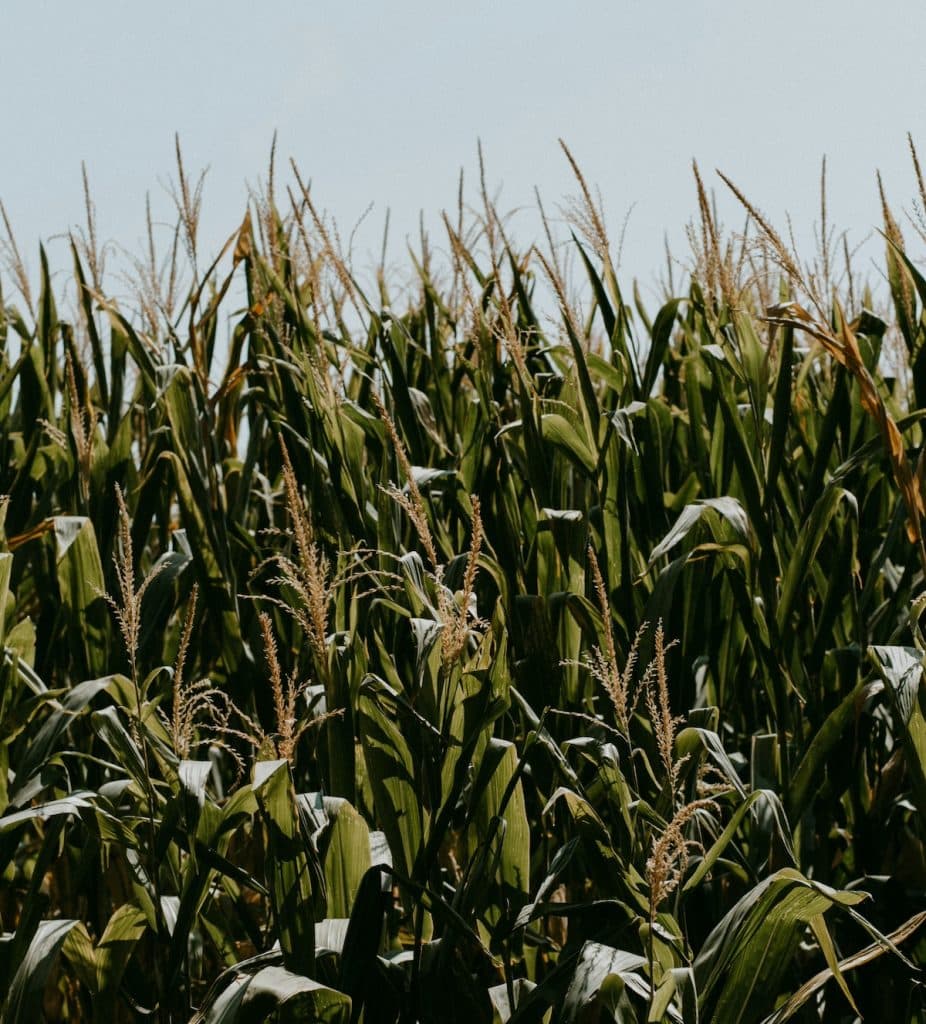
Hilling to 15–20 cm (6–8 inches) remains important—these additional roots will provide good anchorage to withstand winds. Contrary to what one might think, this practice is also done in large commercial fields at the 6–8 leaf stage, not just in our vegetable gardens. (Fortunately, a mechanical hiller takes care of this!)
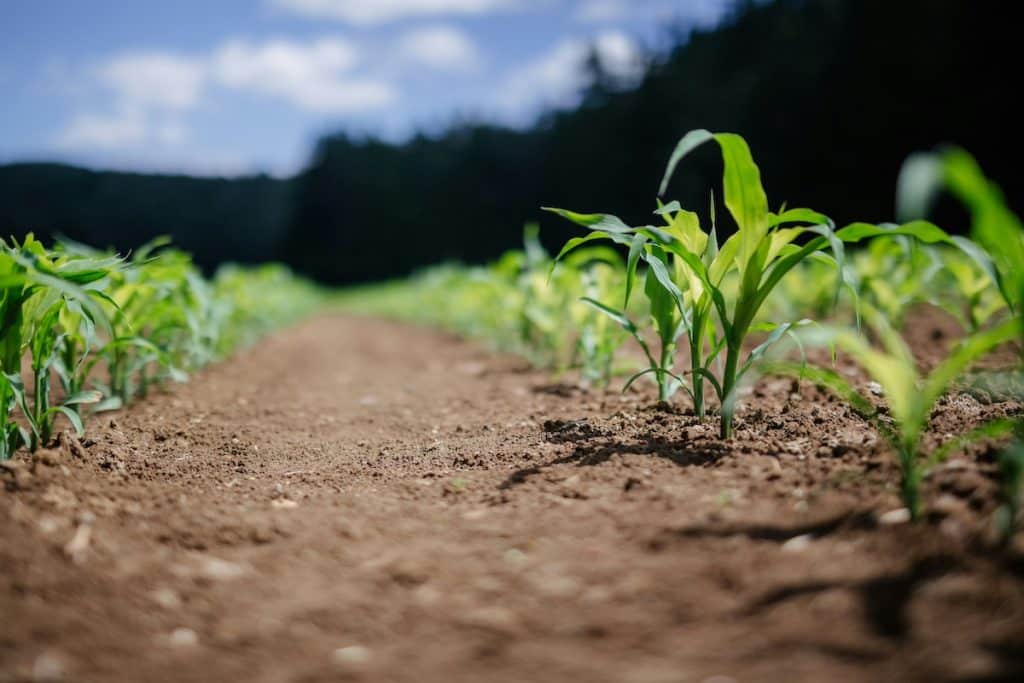
Watering at the base is also recommended, as it avoids disrupting pollination, unlike sprinkling, which can wash away precious pollen.
The ‘Early Golden Bantam’ and ‘Honey Select’ varieties thrive in our northern climate, with a maturity of 70-75 days. Sown in soil warmed to 54°F (12°C), they are resistant to the vagaries of our variable summers.
The Thousand-Year History Continues
The fields that dot our roads tell the story of a remarkable adaptation: that of a plant from South America that has become resistant to our more temperate temperatures thanks to centuries of selection. Arriving here over 500 years ago, corn quickly carved out a place for itself in our agriculture and our diet.
Are you ready for your next corn roast? In any case, you’ll have plenty to talk about! You can tell everyone that each hair produces a kernel, and that it’s thanks to corn that cows produce the butter you put on your corn on the cob! You’re welcome!
0 comments on “Why Is Corn Hairy?”